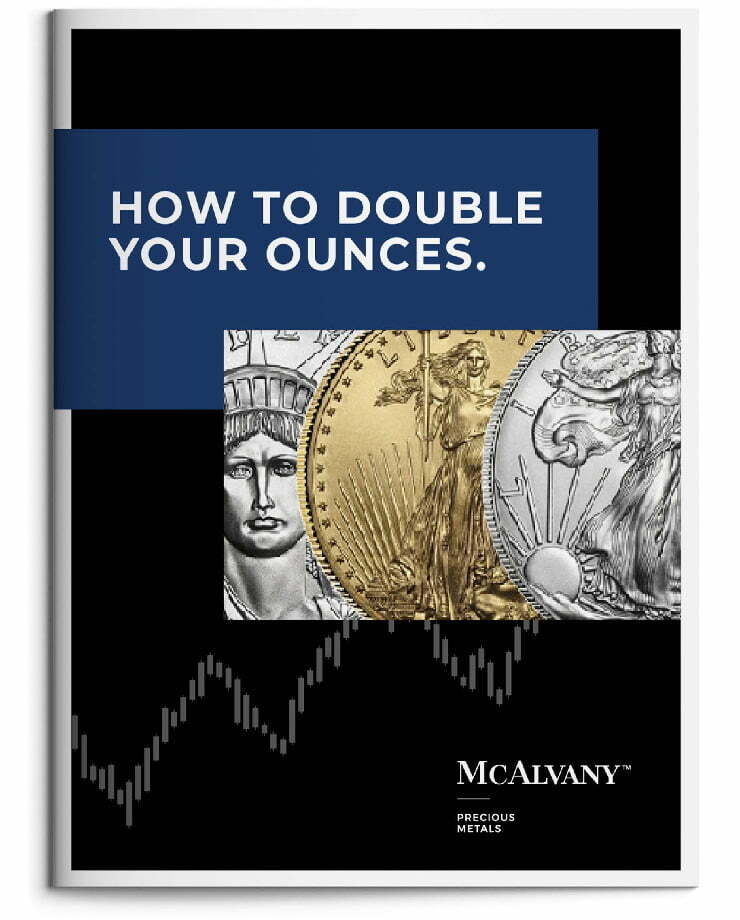Gold’s Shining Moment?
Since 1971, the U.S. as global hegemon has followed the same path of deindustrialization that ended the preceding British Empire’s hegemony. However, it’s increasingly clear that the second Trump administration is committed to stopping a full repeat of the British decline.
After all, history is unmistakable in its lesson that productive power is what ultimately yields wealth and broad power itself. As German economist and political theorist Friedrich List observed in the early 1800s, “The forces of production are the tree on which wealth grows.”
In March of 2023, then-Senator JD Vance hinted at the underpinnings of what has clearly become Trump 2.0’s MAGA reindustrialization plan at a hearing with Fed Chair Jay Powell. At the hearing Vance said, “Americans have enjoyed one of the greatest privileges of the international economy for the last nearly eight decades, a strong dollar that acts, of course, as the world’s reserve currency… This has obviously been great for American purchasing power. We enjoy cheaper imports. Americans, when they travel abroad, benefit from lower costs, but it does come at a cost to American producers. I think in some ways you can argue that the reserve currency status is a massive subsidy to American consumers, but a massive tax on American producers.”
At the same hearing, Vance continued, “Now, I know the strong dollar is sort of a sacred cow of the Washington consensus, but when I survey the American economy and I see our mass consumption of mostly useless imports on the one hand and our hollowed out industrial base on the other hand, I wonder if the reserve currency status also has some downsides… When I look at the American economy, we have a lot of financial engineers and a lot of diversity consultants. We don’t have a lot of people making things, and I worry that the reserve currency status and the lack of control we have over our currency [because of reserve currency status] is perhaps driving that.”
In other words, Vance identified the problem back in March of 2023: “I worry that the reserve currency status and the lack of control we have over our currency is perhaps driving that.”
A month later in April of 2023, Vance further punctuated his views (and presumably the views of the soon-to-be Trump 2.0 ticket), saying, “I am not sure that I think the reserve currency is actually good for the United States of America… It allows your consumers to consume very cheaply… But I think it’s a massive tax on American producers.” Now presumably, Trump picked Vance for a reason, and certainly Vance’s comments echo the unified message heard since from other prominent Trump administration officials.
Again, it seems increasingly clear that, in the view of this administration, it’s not consumption that grows wealth, but List’s “forces of production.”
Last Friday, Vance offered the latest powerful insight into what is presumably administration thinking. At the Munich Security Conference, Vance said, “You win wars with weapons, and the West doesn’t make enough weapons. Germany is the one country in NATO that did not follow the stupid Washington consensus (emphasis added) and allow their country to be deindustrialized… And yet, at the very moment that Putin is more and more powerful, where the Russian army is invading European countries en masse, this is the point at which Germany starts to deindustrialize?”
In HAI’s view, to understand MAGA 2.0 is to understand that for this Trump administration, U.S. domestic production capacity and reindustrialization is now far more important than the reserve currency benefit of affording cheap domestic consumer consumption. That’s a massive change from recent U.S. political orthodoxy. It ultimately makes the strong dollar “sacred cow” and the post-1971 U.S. dollar-centric global monetary regime the targets of the Trump 2.0 policy howitzer.
In HAI’s view, this policy move by Trump 2.0 (and Vance as the heir apparent) away from the previous “stupid Washington consensus” is among the most market-relevant political/economic developments to impact the global community in decades.
We are still in the very early days of Trump 2.0, but thus far words and actions have had an unusual coherence for DC. From here on out, it will be crucial to monitor the degree to which rhetoric manifests in actual policy. What Trump seems to be attempting is a U.S. reindustrialization policy via tariffs and other potentially radical policy tools to weaken the dollar and disincentivize Treasuries as global reserve asset.
This would be nothing short of a 180-degree shift away from the global capital flows that have defined the post-1971 U.S. dollar-centric global monetary regime. Furthermore, a weak dollar policy shift would seemingly require the adoption of a new neutral reserve asset that floats in all currencies—likely gold.
If the Trump administration does indeed pursue the policies that appear to constitute its agenda, those policies will likely result in a revaluation of gold to levels far higher than what the Wall Street consensus currently imagines. As of this week, that Wall Street consensus, as represented by Goldman Sachs, just increased its year-end expected target price for gold to $3,100/oz.
Global central banks appear to have seen this shift towards gold as favored reserve asset coming. They have been telegraphing this eventuality with net gold purchases since the aftermath of the Great Financial Crisis, and with record gold purchases over the last several years. HAI expects a further move higher in gold (beyond the upwardly revised consensus) because either the apparent “MAGA restructuring” underway will work, likely sending the price of gold soaring as it resumes its role as the preferred global neutral reserve asset, or because the MAGA restructuring fails, sending gold (the obvious neutral safe haven asset) skyrocketing as the current U.S. dollar system turns decidedly chaotic.
HAI is admittedly speculating here, but either one of these outcomes (volatility notwithstanding) certainly seems very likely to be bullish for gold. In that light, it’s interesting to note that COMEX gold delivery notices so far for February have already hit 223 tonnes. That’s a massive amount, approaching 90% of monthly global gold mine output. It marks the highest level of delivery notices ever recorded.
Gold is flowing into the U.S. from London, Singapore, and around the globe at record levels, and that gold flowing into the COMEX is being taken into physical possession at a record pace. The exact reasons for the current unprecedented levels of both movement and physical possession of gold in the U.S. are yet unknown, and are the subject of much speculation. What can be said is that if MAGA restructuring has the likely gold price-positive outcome (regardless of success or failure) that HAI expects, a record scramble for physical possession of gold by well informed first movers is what one would expect. For now, we speculate. However, all signs increasingly point towards gold’s approaching shining moment, and to much higher gold prices ahead.
Weekly performance: The S&P 500 was down 1.66%. Gold was up 1.81%, silver was higher by 0.48%, platinum was off 3.09%, and palladium was down 1.82%. The HUI gold miners index was lower by 1.63%. The IFRA iShares US Infrastructure ETF was down 1.62%. Energy commodities were volatile and mixed on the week. WTI crude oil was off 0.44%, while natural gas surged 14.92%. The CRB Commodity Index was off 0.28%. Copper was down 2.24%. The Dow Jones US Specialty Real Estate Investment Trust Index gained 0.38%. The Vanguard Utilities ETF was up 1.52%. The dollar index was nearly flat, down 0.05% to close the week at 106.52. The yield on the 10-yr U.S. Treasury was down by 5 bps to close at 4.43%.
Have a wonderful weekend!
Best Regards,
Morgan Lewis
Investment Strategist & Co-Portfolio Manager
MWM LLC















